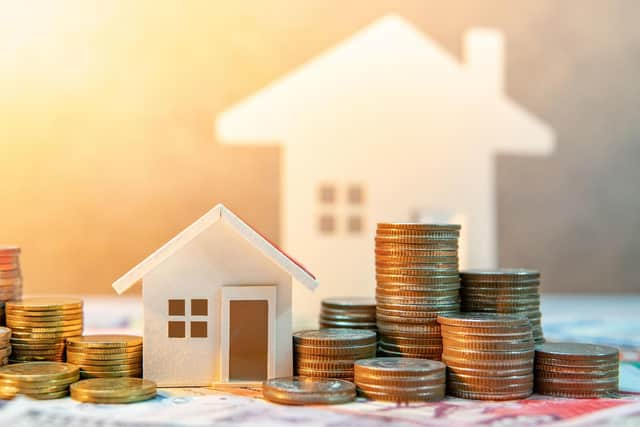Average house price slips as market heads into its annual Christmas slowdown
The only exception remains the North East of England, which saw its rate of annual growth edge up slightly to 10.5 per cent from 10.4 per cent . It’s also now the only area of the UK with annual house price inflation in double figures but the area still has the lowest average property price of £173,587.
Yorkshire house prices are up 9.3 per cent year-on-year and its averagre house price is now £207,800. Wales and the South West have seen the sharpest slowdown of annual growth.
Advertisement
Hide AdAdvertisement
Hide AdThis is notable given both were key hotspots of house price inflation during the pandemic, suggesting that previous drivers of the market such as the race for space and heightened demand for rural living are now receding.


Scotland has also seen growth continue to slow with a 6.5 per cent annual growth down from 7.4 per cent with a typical property now costing £203,132.
House prices in Northern Ireland are up 9.1 per centyear-on-year, easing back from 9.7 per cent last month, with an average property price of £185,097.
The pace of annual property price inflation also slowed in London, which continues to lag the other UK regions and nations. House prices have risen 5.2 per cent over the last 12 months, down from 6.6 per cent a year ago. However, the average property price in the capital remains well above the UK average at £549,160, which presents an issue for those keen to get onto the property ladder in the capital.
Advertisement
Hide AdAdvertisement
Hide AdKim Kinnaird, Director, Halifax Mortgages, said: “The average monthly drop of 2.3 per cent is the largest seen since October 2008 and the third consecutive fall.
“While a market slowdown was expected given the known economic headwinds, and following such extensive house price inflation over the last few years up 19 per cent since March 2020, this month’s fall reflects the worst of the market volatility over recent months.
“Some potential home moves have been paused as homebuyers feel increased pressure on affordability and industry data continues to suggest that many buyers and sellers are taking stock while the market continues to stabilise.
“When thinking about the future for house prices, it is important to remember the context of the last few years, when we witnessed some of the biggest increases the market has ever seen. Property prices are up more than £12,000 compared to this time last year, and well above pre-pandemic levels
Advertisement
Hide AdAdvertisement
Hide Ad“The market may now be going through a process of normalisation. While some important factors, like the limited supply of properties for sale, will remain, the trajectory of mortgage rates, the robustness of household finances in the face of the rising cost of living, and how the economy and more specifically the labour market performs will be key in determining house prices changes in 2023.”